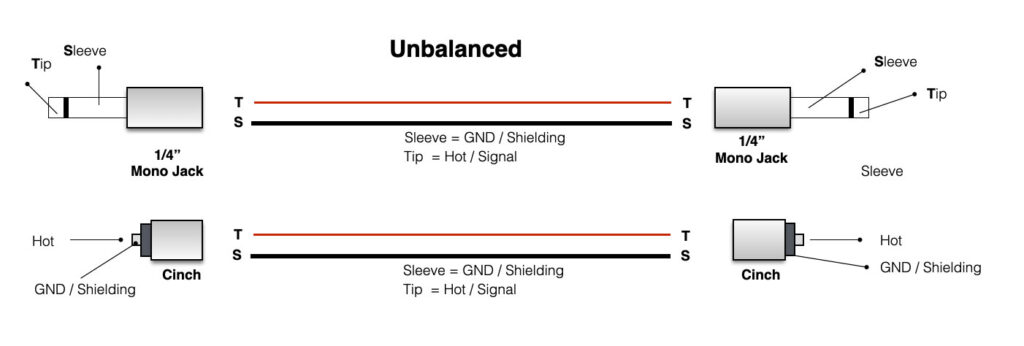In the world of professional audio there are normalized connectors in use to connect microphones, mixers and amplifiers. There are balanced and un-balanced connections. To deal with the transport of signals over longer distances (for example the microphone connected to the mixer) we make use of balanced cables. The shorter connections are mostly un-balanced (a keyboard connected to the amplifier).
Un-balanced audio signal
An un-balanced audio-signal consists of two wires, signal and ground. The ground is also used as a ‘shield’. A common example is the jack-cable connected to a guitar or synthesizer. Check the examples below

Balanced audio-signal
So what is a balanced signal? In order to be able to transport signals over longer distances, without disturbances, they came up with a clever mechanism, called a balanced signal. The original signal from a microphone is called the ‘hot’ signal (see “a” in graph below). If we invert this hot signal, we create a ‘cold’ signal. The cold signal is 180 degrees ‘out of phase’ (“b” in graph).

Over long (cable) distance disturbances will occur in both the hot and the cold signal, but the disturbances will not be out of phase. On the balanced-input of any audio device, the two signals “a” and “b” (hot and cold) are subtracted (with a differential amplifier). The result will be therefor ‘clean’ and double the value of the hot signal. The disturbances are eliminated.

An example for a balanced cable, is the common microphone cable with two XLR-connectors on both side. See below:
